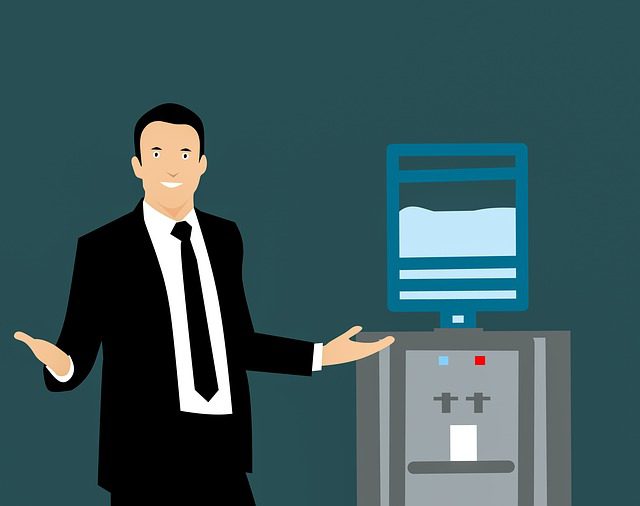When To Replace RO Membrane & Filters?
When To Replace RO Membrane & Filters?
If you have an RO purifier, you must regularly understand the significance of replacing RO Membrane and Filters. Constant replacement of RO filters and membranes is important to ensure 100% hygienic and safe drinking water.
When we discuss the maintenance of RO purifiers, the first thing that comes to our minds is the substitute of filters and membranes. You must adequately understand the regular schedule of replacement of filters because filters and Membranes constitute the significant components of any water purifier. And the charges of substitute of filters and membrane is around 80% of the total maintenance expenses of an RO purifier.
This post gives you a fair understanding of when to replace the filters and membrane of your water purifier.
This information helps in –
- Ensure that you always get clean and 100% safe water
- Improving the life of your RO purifier
- Reducing the maintenance cost
- Avoid being cheated by unethical service technicians.
The question at hand may seem very clear and relatively straightforward, but the answer is not so simple because when we talk about replacing the filter and membrane, the approach can’t be ‘one size that fits all.
The factors below should always be considered before estimating the good time to change the RO membrane or filters.
- Level of pollutants and impurities in the input water
- TDS Level of the input water
- How much water do you purify using your RO purifier?
If the water has a very high level of impurities, high TDS level, or if you use your RO purifier to purify large quantities of water, the filters and RO membrane would require to be changed quite regularly.
The RO pre-filter must be replaced every 3 – 4 months ideally. The replacement time can be shorter or longer, relying on the grade and amount of water purified. The other pre-filters, including the Sediment Filter and Carbon Filter, should be replaced every 6-12 months depending on the amount of water you filter and how good or bad the input water is. Nevertheless, this is just an average, and to get the proper time to replace them, we need to look at filters individually. You can also take help from RO service Delhi.
When To Change Sediment Filter?
A sediment filter is designed to remove sediment and dirt from the water, so your carbon filter and RO membrane don’t get clogged prematurely. Every home might have a different amount of sediment in the input water, so there is no ‘one size fits all answer to tell you how long it should last for you.
It is essential to keep the pressure as high as possible going into the membrane. The sediment filter would only cost some hundred rupees, so changing the Sediment Filter on time is always recommended. If the Sediment filter of the RO purifier is not replaced timely, then the dirt particles will arrive in the RO membrane, and the membrane will get blocked; this reduces the efficiency and the life of the RO Membrane.
If you maintain your Sediment Filter precisely, the Carbon Filter and RO Membrane should last for a long time. We suggest that Sediment Filter should be replaced after one year of use.
When To Replace Carbon Filter?
Water from Sediment Filter is transferred from the carbon filter, which removes Chlorine and other organic contaminants. Carbon filter also filters out the water’s foul odor and unpleasant taste.
Chlorine in water also impacts the life of the RO membrane. An activated carbon filter absorbs Chlorine and other organic impurities and thereby extends the life of the RO membrane. Consequently, it is crucial to switch the Carbon filter regularly to improve the life of the RO Membrane and stop foul odor and taste in the filtered water. Aquaguard RO service Delhi can help you to solve this issue.
We recommend changing your Carbon filter at least once a year.
When To Replace RO Membrane?
RO Membrane is the most crucial element of any RO water purifier. RO Membrane is the filter doing all the work; the Sediment Filter and Carbon Filter only prepare the water for the RO membrane, so it doesn’t get damaged.
Suppose you take proper maintenance of the sediment and carbon filters and replace them at the necessary intervals. In that case, the RO membrane only needs to be changed after 4,000 to 6,000 liters of water purification. The substitution of RO membrane will be based on water consumption, quality of input water, and efficiency of sediment filter and carbon filter.
Generally, reverse osmosis Membranes survive for around 2-3 years. Nevertheless, we have seen them go as long as five years. Your reverse osmosis membrane may be destroyed soon if you have hard water or never flush the membrane.
The best way to know when to replace your reverse osmosis membrane is to check the TDS level of purified water. You will need a TDS meter to find out the TDS level. If you don’t already have one, we suggest purchasing a digital TDS meter to quickly find the TDS in water.
You will know that your RO membrane starts going bad when the TDS begins to climb. This can frequently happen pretty suddenly; because of that, we suggest replacing the RO membrane every 2-3 years.
Please Note: If the input water is tough or has a high TDS, the reverse osmosis membrane may need to be replaced more frequently. You should always review the specification of your reverse osmosis filter or that of your reverse osmosis membrane. For example, if the reverse osmosis membrane can purify up to 1500 ppm of TDS, purifying input water higher than 1500 ppm TDS will reduce its life.
Conclusion
We all understand that reverse osmosis water filters are quite costly than various water purifiers but a complete need to filter high TDS water. The maintenance price of reverse osmosis purifiers is also comparatively high as expensive filters and membranes.
We also understand that reverse osmosis purifiers lead to huge water wastage as an average reverse osmosis water purifier produces around 70-80% of wastewater. You should use an reverse osmosis water filter only when the input water has high TDS and the water doesn’t taste natural. Suppose the water supply at your home does not meet the above criteria. In that case, the initial cost, maintenance, and wastage of water in an reverse osmosis purifier will overshadow the benefits.






